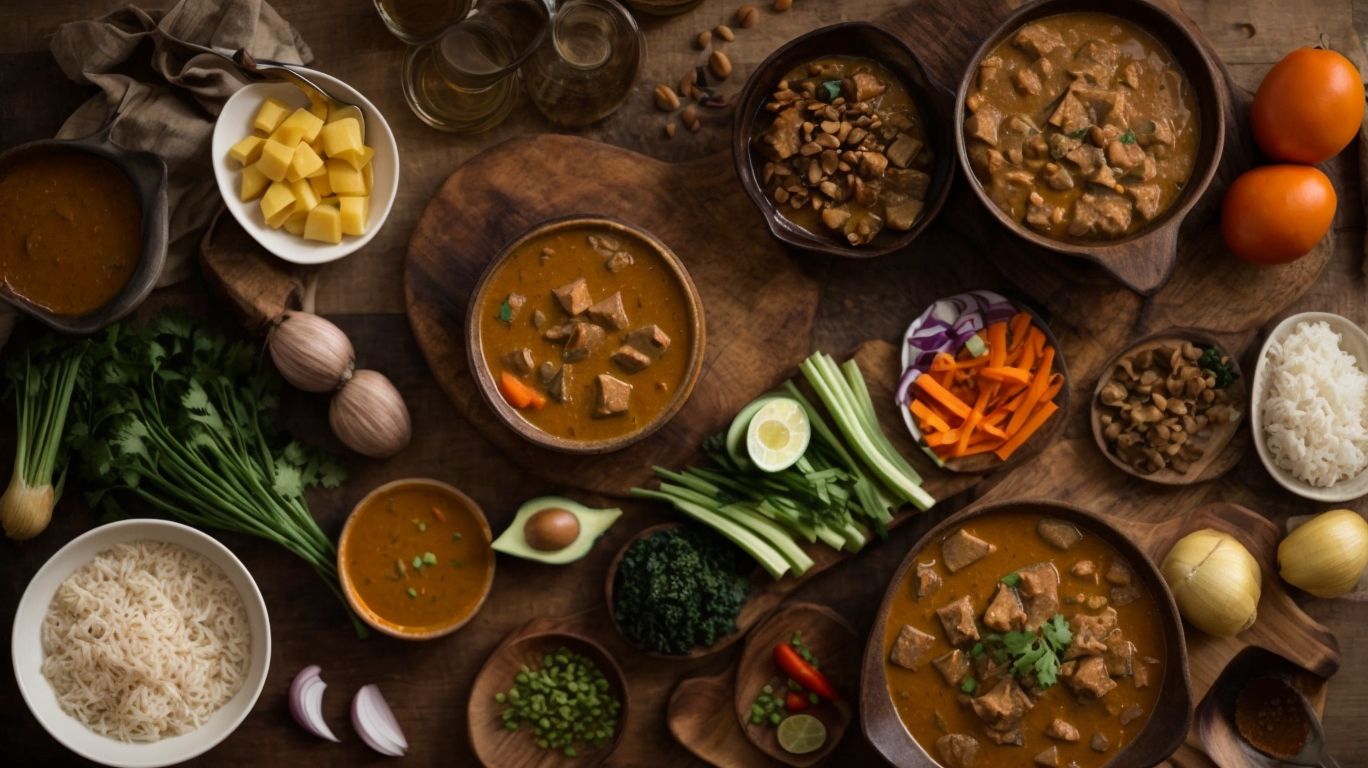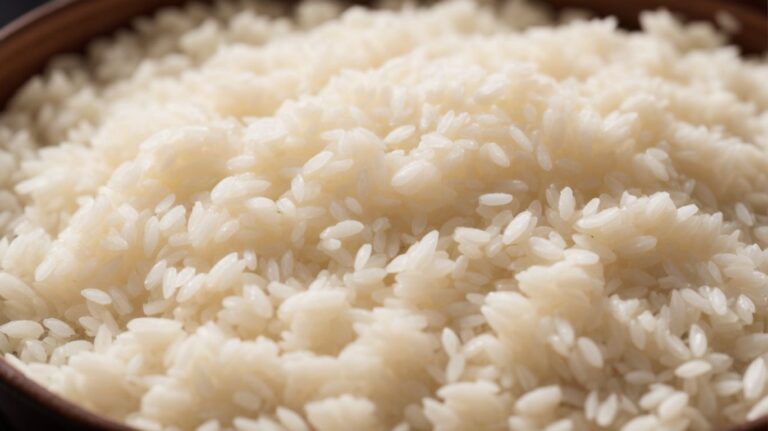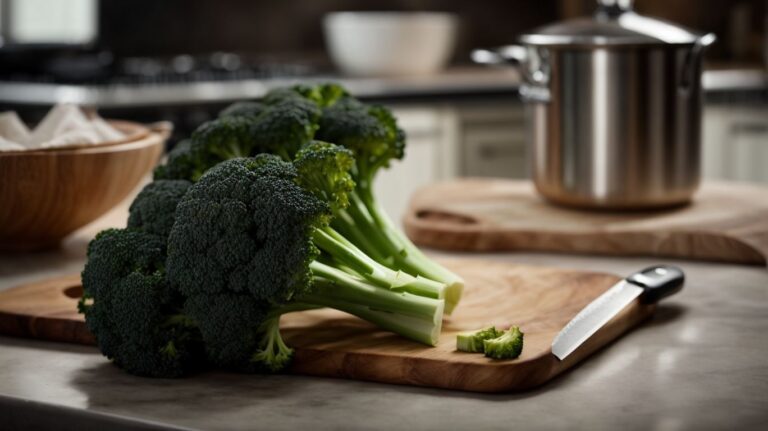How to Cook Kare Kare Step by Step?
Are you a fan of Filipino cuisine or looking to expand your culinary skills?
In this article, we will explore the delicious and flavorful dish known as Kare Kare.
From understanding what Kare Kare is and the essential ingredients needed, to preparing the meat, vegetables, and peanut sauce, we will guide you through each step of the cooking process.
So, if you’re ready to indulge in a savory and aromatic meal, keep reading to learn how to cook Kare Kare like a pro!
Key Takeaways:
What is Kare Kare?
Kare Kare is a beloved Filipino dish known for its rich and flavorful stew, often made with oxtail, vegetables, and a unique peanut sauce.
In the traditional Filipino culinary scene, Kare Kare holds a special place as a recipe that embodies the essence of comfort food. The slow-cooked oxtail not only adds depth to the dish but also brings a succulent tenderness that is truly irresistible. Combining it with a medley of vibrant vegetables like eggplant, banana heart, and string beans creates a colorful and nutritious ensemble. What truly sets this recipe apart is the creamy, nutty peanut sauce that gives Kare Kare its distinctive taste and aroma. This sauce, with its balance of savory and nutty flavors, elevates the dish to a whole new level of culinary delight.
What are the Ingredients for Kare Kare?
The Ingredients for Kare Kare typically include oxtail, beef tripe, an assortment of vegetables, and a luscious peanut sauce, creating a harmonious blend of flavors and textures.
To prepare this traditional Filipino dish, you’ll need the earthy richness of oxtail and the distinct chewiness of beef tripe, both imparting their unique tastes to the dish. The medley of vegetables like eggplant, banana heart, and string beans provides a vibrant array of colors and nutrients, enhancing the visual appeal and nutritional value. The star of this dish, the peanut sauce, with its creamy and nutty profile, ties all the components together, lending that signature savory-sweet flavor. The recipe for Kare Kare is a cherished one, often passed down through generations, embodying the heartwarming essence of Filipino cuisine.
Meat
When preparing Kare Kare, selecting the right meat is crucial to achieving a tender and flavorful dish. Common choices include oxtail, beef chuck, or pork, with each cut requiring specific cooking times for optimal results.
For oxtail, the slow cooking method is ideal as it breaks down the tough collagen, resulting in a melt-in-your-mouth texture. This process typically takes around 2 to 3 hours, ensuring the meat is tender and infused with the rich flavors of the dish.
Beef chuck, known for its marbling and great flavor, requires a bit longer cooking time, usually around 3 to 4 hours. This cut benefits from braising or stewing, allowing the meat to become fork-tender while soaking up the delectable Kare Kare sauce.
Pork, on the other hand, can be cooked slightly faster compared to beef cuts, typically in 1.5 to 2 hours, making it a quicker option for those seeking a delicious Kare Kare without the lengthy cooking process.
Vegetables
In Kare Kare, the selection of vegetables plays a significant role in enhancing the dish’s flavors and textures. Common choices include string beans, eggplant, and banana heart, often served with bagoong alamang and annatto water for a complete experience.
These vegetables are carefully chosen for their complementary flavors and textures, adding depth and variety to the dish. String beans provide a crunchy element, while eggplant brings a soft, creamy texture. The banana heart adds a unique touch with its slightly tangy taste. Bagoong alamang, a savory shrimp paste, and annatto water, derived from annatto seeds, infuse Kare Kare with its distinct umami and vibrant color palette. Combining these ingredients creates a symphony of flavors that make every bite a delightful exploration of Filipino cuisine.
Peanut Sauce
The Peanut Sauce in Kare Kare is a decadent blend of roasted peanuts, savory components, and rich flavors that elevate the dish to new heights. Its incorporation adds a depth of flavor and complements the solid beef taste, making it a staple of the dish.
This luscious sauce is a crucial element in the recipe, as it brings together the contrasting flavors and textures of the dish while imparting a creamy consistency. The nutty undertones from the roasted peanuts provide a delightful crunch and a nutty aroma that tantalizes the taste buds. The peanut sauce not only serves to enhance the overall dining experience but also acts as a signature element that sets Kare Kare apart from other traditional Filipino dishes.
How to Prepare the Meat for Kare Kare?
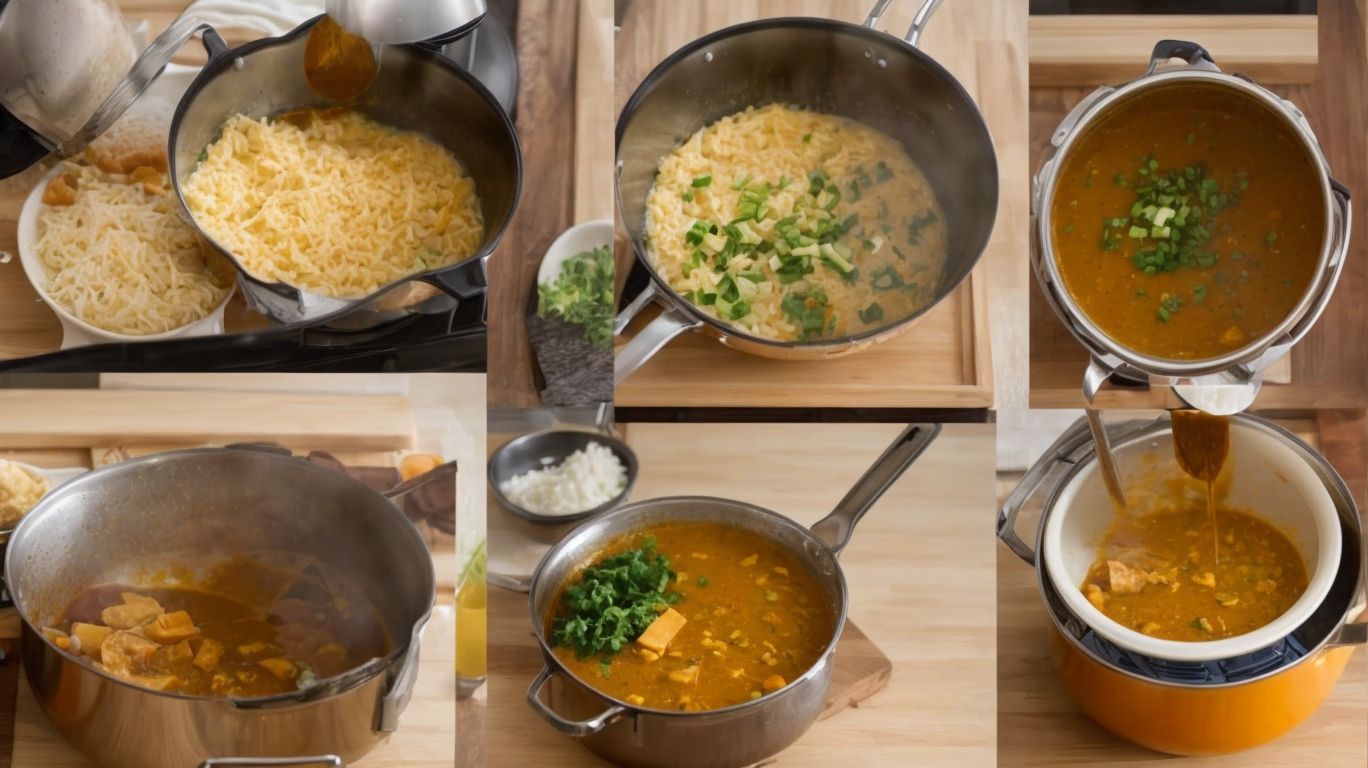
Credits: Poormet.Com – Terry Gonzalez
Preparing the Meat for Kare Kare involves several key steps to ensure tenderness and flavor. This includes selecting the right cuts, tenderizing the meat properly, and seasoning it with aromatic ingredients like Knorr beef cube for enhanced taste.
Before diving into the cooking process, it’s crucial to choose the appropriate beef cuts such as oxtail or beef tripe for that authentic Kare Kare flavor. These cuts bring a depth of richness to the dish. Tenderizing the meat can be achieved through slow cooking or using a meat mallet to break down the tough fibers, allowing for a more enjoyable eating experience. Adding the Knorr beef cube not only intensifies the beefy essence but also infuses the meat with a savory richness that complements the peanut sauce of Kare Kare perfectly.
Choosing the Right Cut of Meat
Selecting the Right Cut of Meat for Kare Kare is essential to achieve the desired texture and flavor profile.
When preparing Kare Kare, the choice between a classic beef chuck or a delectable oxtail Kare-kare can significantly influence the overall character of the dish. Beef chuck is renowned for its ideal marbling, which ensures a tender and juicy result, infusing the Kare Kare with succulence.
On the other hand, oxtail Kare-kare offers a distinctive richness and a delightful gelatinous texture, providing a unique mouthfeel that elevates the eating experience. The selection of the meat cut can make or break the final outcome of your Kare Kare masterpiece, so make this decision wisely!
Tenderizing the Meat
Tenderizing the Meat, especially oxtail, for Kare Kare is crucial to ensuring a melt-in-your-mouth texture. Utilizing a pressure cooker can expedite the tenderizing process, resulting in perfectly cooked and succulent meat.
In terms of tenderizing oxtail, the pressure cooker works wonders by breaking down tough fibers and collagen in the meat quickly. This method not only saves time but also locks in the natural flavors and juices of the oxtail. By cooking the meat under pressure, it tenderizes evenly and efficiently, ensuring a consistent softness throughout. The high heat and steam generated in the pressure cooker help to soften the meat, resulting in a delectably tender texture that complements the rich flavors of the Kare Kare sauce.
Seasoning the Meat
Seasoning the Meat is a critical step in preparing Kare Kare, as it imparts depth of flavor and aroma to the dish. Ingredients such as garlic, onion, stock, and beef cube are commonly used to enhance the overall taste profile.
Garlic and onion play a crucial role in infusing earthy notes into the meat, creating a robust foundation for the dish. The aromatic essence they release during the cooking process fills the kitchen with an inviting fragrance, setting the stage for a mouthwatering meal. Adding stock and beef cube amplifies the umami flavors, adding richness and complexity to the dish, ensuring each bite is a harmonious blend of savory elements.
How to Prepare the Vegetables for Kare Kare?
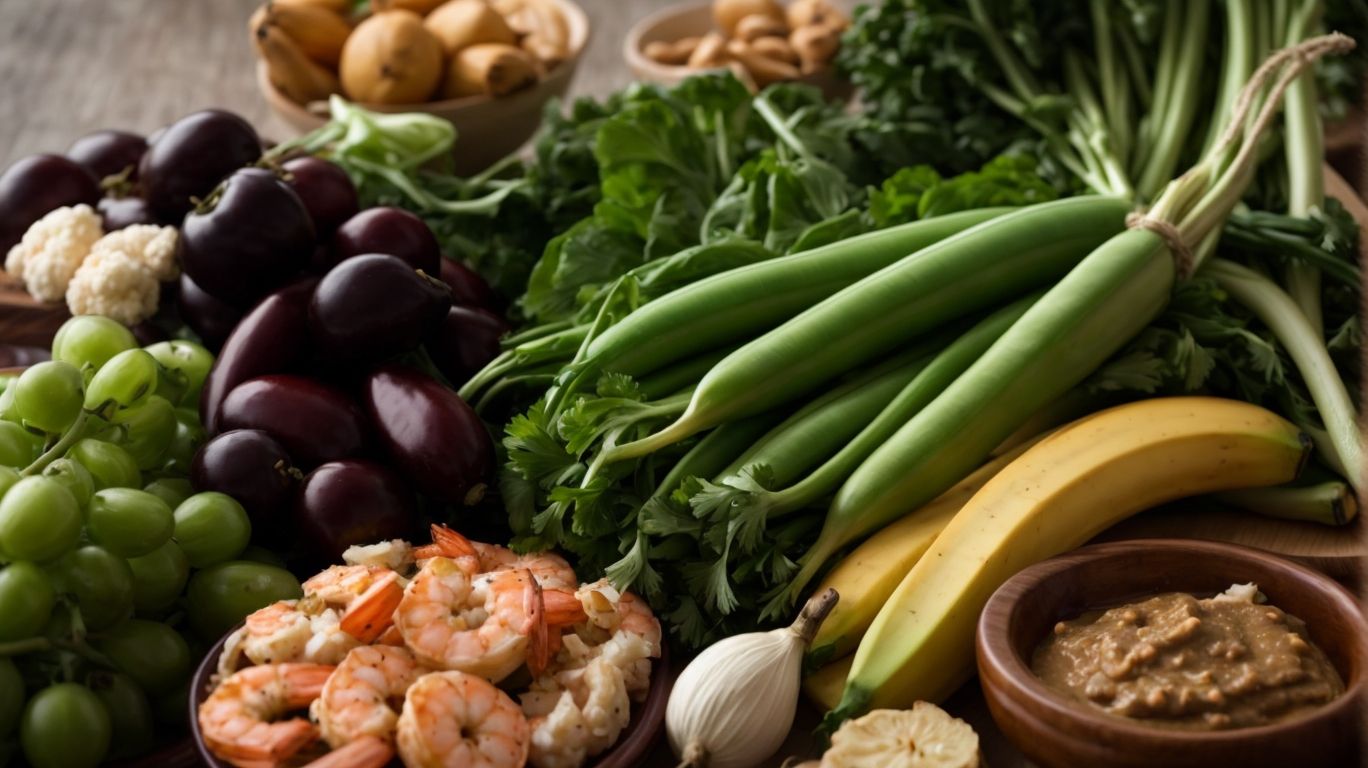
Credits: Poormet.Com – Juan Hill
Preparing the Vegetables for Kare Kare involves techniques like blanching to retain their vibrant colors and crisp textures, enhancing the visual appeal and overall dining experience. Some vegetables may also require soaking in annatto water for added flavor and color.
Blanching is a key step in the process, as it involves briefly immersing the vegetables in boiling water then quickly transferring them to an ice water bath to halt the cooking process. This method not only locks in the color but also helps maintain the vegetables’ crunchiness. Soaking certain vegetables in annatto water infuses them with a rich, earthy flavor and imparts a beautiful orange hue, elevating the visual presentation of the dish.
Blanching the Vegetables
Blanching the Vegetables for Kare Kare is a crucial step to retain their vibrant colors and ensure the perfect texture for special occasions. This process helps maintain the freshness and visual appeal of the vegetables in the dish.
When you blanch the vegetables for Kare Kare, you are not only enhancing the aesthetics of the dish but also preserving the nutrients and flavors locked within them. It sets the stage for a visually stunning presentation that truly elevates your dining experience. By briefly immersing the vegetables in boiling water and then shocking them in ice water, you lock in their color, crunch, and nutrients, ensuring each bite is a burst of freshness. The blanching process creates a harmonious balance between the tender meat and the crisp vegetables, making every spoonful a delightful journey of textures and tastes.
Preparing the Vegetables for Cooking
Preparing the Vegetables for Cooking in Kare Kare involves selecting fresh produce that complements the dish’s flavors, catering to seafood lovers and creating a festive dining experience with a vibrant array of vegetables.
When catering to seafood enthusiasts in a festive setting, consider options like fresh green beans, eggplant, and bok choy to enhance the flavors of your Kare Kare. The crunchy texture of green beans, the rich taste of eggplant, and the subtle sweetness of bok choy blend perfectly with the creamy richness of the dish. These vegetables not only provide a delightful contrast in colors and tastes but also offer a nutritional boost to your meal.
How to Make the Peanut Sauce for Kare Kare?
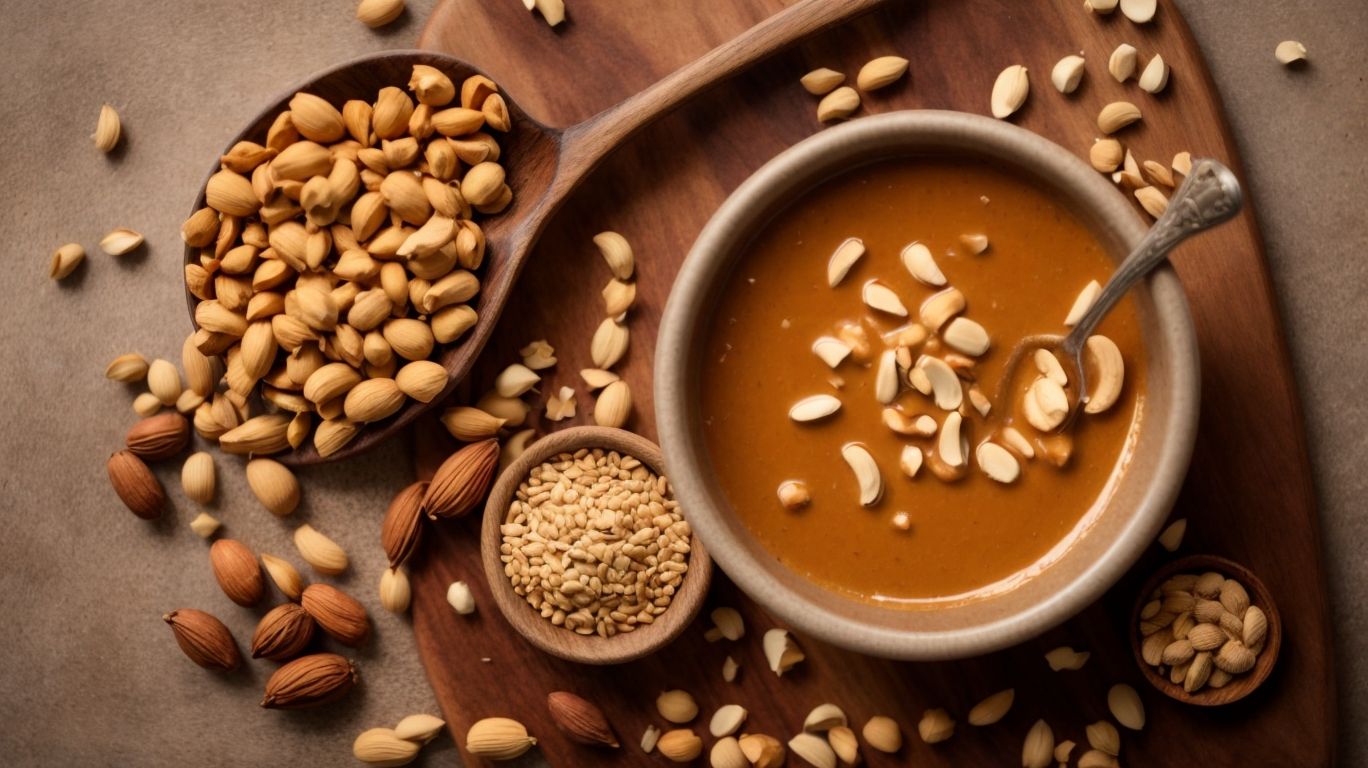
Credits: Poormet.Com – Donald Clark
Creating the Peanut Sauce for Kare Kare involves a meticulous process of roasting and grinding peanuts, incorporating aromatic annatto seeds for color, and blending with creamy peanut butter to achieve a velvety and nutty sauce that complements the dish perfectly.
Start by carefully roasting the peanuts until they reach a beautiful golden hue, filling your kitchen with a rich, nutty aroma. Grind the roasted peanuts into a fine powder, intensifying their flavor profile. Then, infuse the mixture with annatto seeds to impart a vibrant red color, adding visual appeal to the sauce.
Once the peanuts and annatto seeds have melded their flavors, add in a generous dollop of smooth peanut butter to create a luxurious, velvety texture. Stir everything together until the sauce is creamy and well combined, ready to elevate your Kare Kare dish to new heights of flavor.
Roasting and Grinding the Peanuts
Roasting and Grinding the Peanuts for Kare Kare is a labor of love that enhances the sauce’s flavor profile and creates a rich depth that resonates with family traditions.
Roasting and grinding the peanuts plays a crucial role in the development of the Peanut Sauce for Kare Kare. This meticulous process is not just about cooking; it’s a way to infuse the dish with memories and heart. As the peanuts roast, their natural oils release, filling the kitchen with an irresistible nutty scent that evokes nostalgia.
Family recipes passed down through generations often emphasize the importance of this step, highlighting the significance of honoring culinary heritage. The act of grinding the peanuts into a creamy consistency is where the magic truly happens, transforming ordinary peanuts into a velvety sauce that coats each bite with warmth and comfort.
Making the Peanut Sauce Base
Creating the Peanut Sauce Base for Kare Kare involves combining the roasted peanuts with flavorful Kare-kare mix, infusing the sauce with rich color and depth of taste. The addition of a savory broth further enhances the sauce’s complexity.
This process of crafting the Peanut Sauce Base for Kare Kare is a delicate dance of flavors and textures. The Kare-kare mix plays a crucial role in adding a distinct Filipino taste profile to the sauce, elevating it to a new level of authenticity. The roasted peanuts, when blended with the mix, create a nutty undertone that complements the richness of the broth perfectly.
Adding the Vegetables and Meat to the Sauce
Incorporating the Vegetables and Meat into the Peanut Sauce for Kare Kare is a key step that allows the flavors to meld and develop a harmonious taste profile. Variations may include the use of annatto water for color infusion or beef cube for added depth.
When the vibrant hues of the annatto water or the rich flavors from the beef cube intermingle with the earthy vegetables and succulent meat, a delightful complexity emerges in every bite of this Filipino delicacy. The velvety Peanut Sauce acts as a unifying element, tying together the diverse elements into a symphony of flavors. The slow simmering process allows the ingredients to exchange their essences, creating a luscious and savory broth that encapsulates the essence of Kare Kare.
How to Cook Kare Kare?
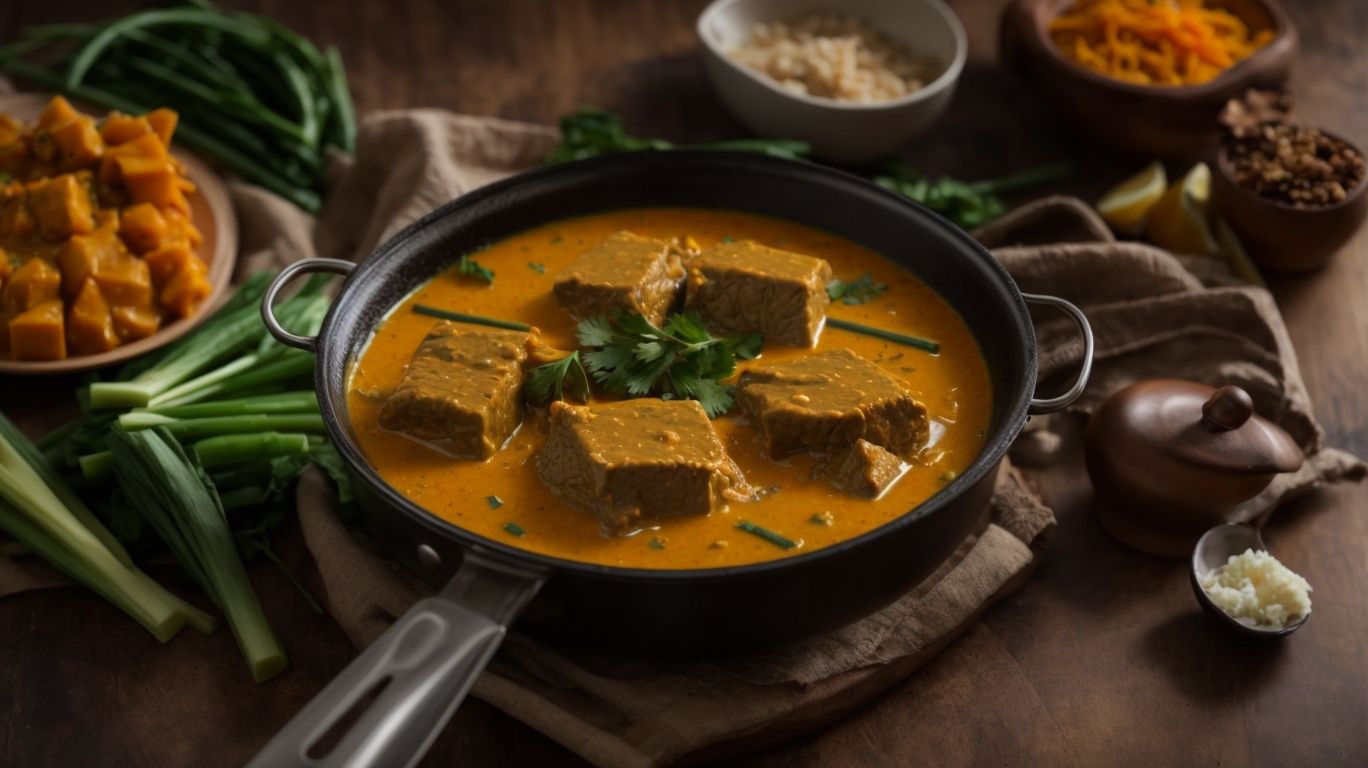
Credits: Poormet.Com – Benjamin Torres
Cooking Kare Kare involves a series of steps such as sautéing aromatics, simmering the stew to tenderize the meat, and thickening the sauce to achieve the desired consistency, resulting in a delectable and comforting dish.
To begin, heat oil in a large pot and sauté garlic, onions, and tomatoes until fragrant.
Next, add the oxtail (or tripe) and vegetables like eggplant and banana heart, simmer them together in a rich peanut sauce.
The key is to let it stew slowly until the meat is fall-apart tender.
Finally, thickening the sauce with ground toasted rice gives the dish its signature creamy texture.
Serve Kare Kare with bagoong on the side for a burst of flavor!
Sautéing the Aromatics
Sautéing the Aromatics for Kare Kare sets the foundation for the dish’s flavorful profile, with the aroma of garlic and onion enhancing the peanut butter base. This step creates a fragrant and inviting start to the cooking process.
The process of sautéing garlic and onion releases their natural oils and flavors, infusing the peanut butter base with a rich depth that defines the character of the Kare Kare. The sizzling sound of these aromatics as they hit the hot oil is a sign that the magic is beginning. As they soften and caramelize, their sweetness balances the nutty richness of the peanut butter, creating a harmonious marriage of flavors.
Adding the Peanut Sauce and Meat
Incorporating the Peanut Sauce and Meat into the stew for Kare Kare is a pivotal step that infuses the dish with robust flavors and tender textures. Slicing the beef thinly ensures even cooking and optimal absorption of the savory sauce.
The Peanut Sauce plays a crucial role in providing a rich, nutty undertone to the stew, complementing the bold flavors of the meat.
When adding the meat, such as beef slices, to the pot, it’s essential to brown them first to enhance their depth of flavor.
Ensuring that the meat is tender and succulent involves simmering it gently in the sauce, allowing the flavors to meld together.
Simmering and Thickening the Sauce
Simmering and Thickening the Sauce for Kare Kare is a critical phase that allows the flavors to meld and intensify, while achieving a rich color and velvety texture. The addition of a peanut component further enhances the sauce’s depth and complexity.
The slow simmering process not only helps the broth to develop its full flavor potential but also allows the ingredients to intertwine harmoniously. As the sauce thickens, it gains a luxurious texture that coats every morsel of meat or vegetable, creating a truly indulgent experience. The magic of Kare Kare lies in the balance of flavors and the deep, earthy notes that the peanut element brings to the dish.
How to Serve Kare Kare?
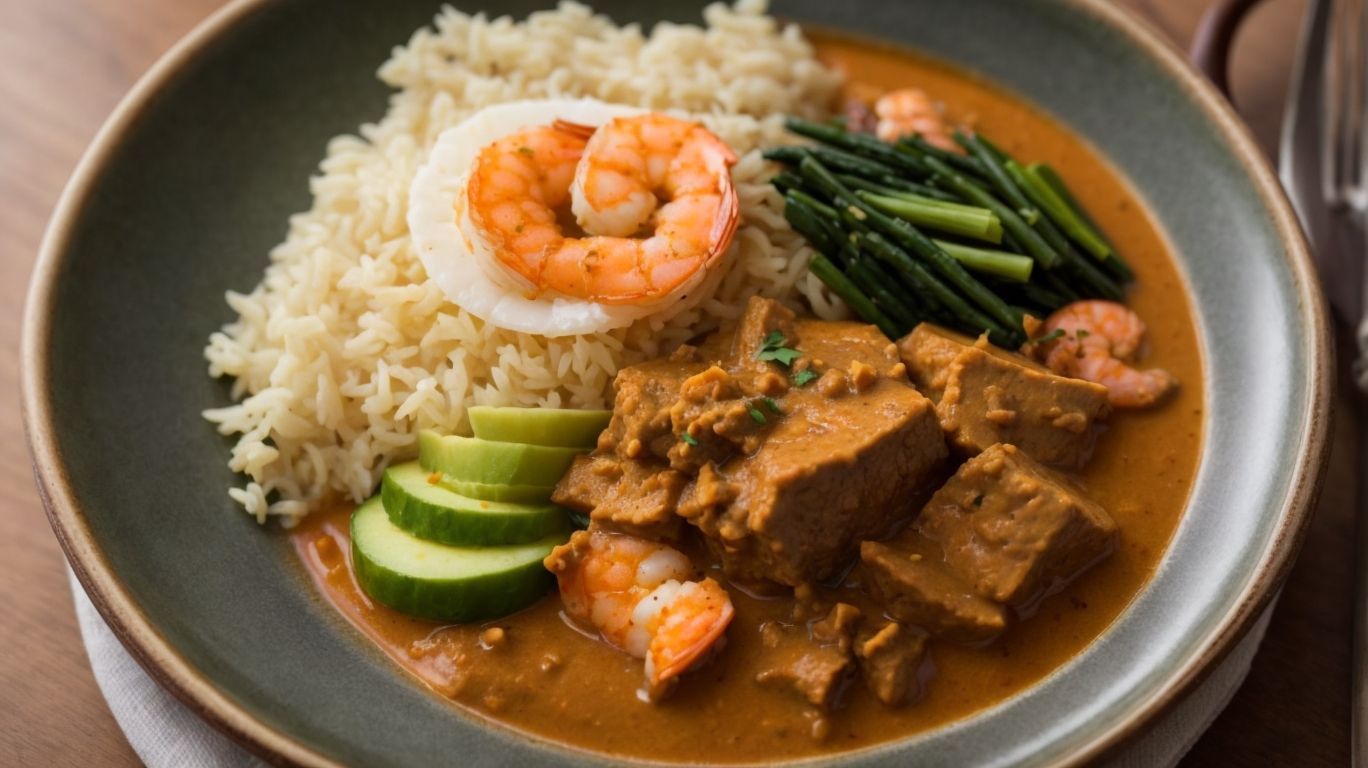
Credits: Poormet.Com – Charles Roberts
Serving Kare Kare involves a thoughtful presentation that showcases the dish’s vibrant colors and enticing aromas. Pairing it with suggested side dishes elevates the dining experience, creating a memorable meal for special occasions or festive gatherings.
When serving Kare Kare, consider using decorative plating techniques to make the dish visually appealing. The rich peanut sauce and tender meat of Kare Kare deserve to be presented in a way that entices both the eyes and the taste buds. Enhancing the meal with a side of fragrant steamed rice or crispy bagoong (shrimp paste) adds depth to the dining experience.
This Filipino favorite is versatile and can shine on various occasions, whether it’s a casual family dinner or a grand celebration. Its comforting flavors and elaborate presentation make it a standout dish that can turn any meal into a feast to remember.
Plating the Kare Kare
Plating the Kare Kare is an opportunity to showcase its festive colors and inviting aroma, creating a visual delight that appeals to both the eyes and taste buds. This step adds a touch of elegance and warmth to family gatherings and special occasions.
As you carefully arrange the vibrant orange hues of the tender stewed oxtail and brightly colored vegetables against a backdrop of rich peanut sauce, the dish transforms into a masterpiece of delicious artistry fit for any celebratory table.
The juxtaposition of the deep earthy tones of the meat with the vibrant greens and reds of the vegetables not only pleases the eye but also symbolizes the essence of togetherness and sharing, encapsulating the spirit of family gatherings and festive settings.
Suggested Side Dishes
Pairing Kare Kare with Suggested Side Dishes enhances the overall dining experience, offering a balance of flavors and textures that complement the rich stew. Consider serving a special version with seafood broth for a unique twist on this classic dish.
When choosing side dishes to accompany Kare Kare, opt for options that can cut through the creaminess of the stew, such as pickled vegetables or a tangy green mango salad. These choices provide a refreshing contrast to the richness of the main dish. For a more substantial pairing, consider steamed jasmine rice or garlic fried rice to soak up the flavorful sauce.
For those feeling adventurous, the special version of Kare Kare with seafood broth introduces a delightful maritime essence to the traditional recipe. The brininess of the seafood broth adds a new layer of complexity to the dish, making it a standout option for seafood lovers.
Frequently Asked Questions
What ingredients do I need to cook Kare Kare?
To cook Kare Kare, you will need oxtail, beef tripe, peanut butter, annatto powder, eggplant, bok choy, string beans, garlic, onions, fish sauce, and rice noodles.
How do I prepare the oxtail and beef tripe for Kare Kare?
Start by boiling the oxtail and beef tripe for at least an hour to soften them. Then, drain and rinse them before cooking with the rest of the ingredients.
What is the secret to a flavorful Kare Kare sauce?
The key to a flavorful Kare Kare sauce is the peanut butter. Make sure to use a high-quality, natural peanut butter for the best taste.
Can I substitute any ingredients in Kare Kare?
Yes, you can substitute the oxtail and beef tripe with other meats such as pork or chicken. You can also use different vegetables like cabbage, pechay, or okra.
How do I know when the Kare Kare is ready to serve?
You will know the Kare Kare is ready when the meat is tender and the sauce has thickened to the desired consistency. You can also taste and adjust the seasoning to your liking.
Can I make Kare Kare in advance?
Yes, Kare Kare can be made in advance and stored in the fridge for up to 3 days. Just reheat it in a pan or microwave before serving.

